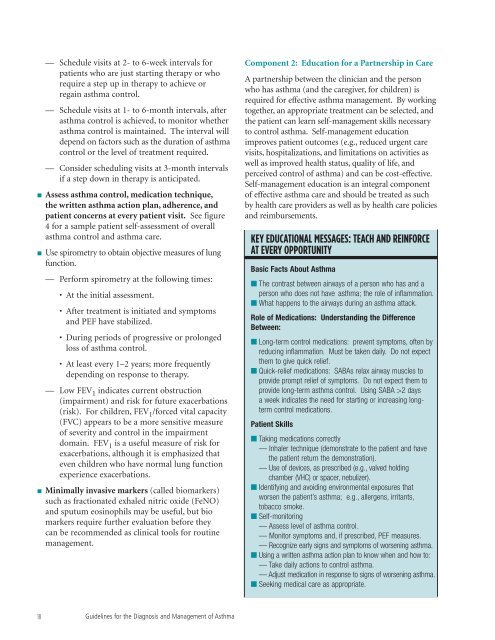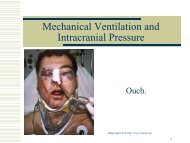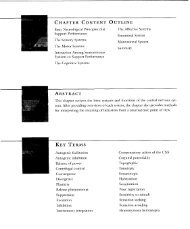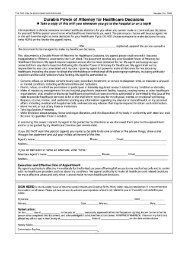Guidelines for the Diagnosis and Management of Asthma
Guidelines for the Diagnosis and Management of Asthma
Guidelines for the Diagnosis and Management of Asthma
You also want an ePaper? Increase the reach of your titles
YUMPU automatically turns print PDFs into web optimized ePapers that Google loves.
— Schedule visits at 2- to 6-week intervals <strong>for</strong><br />
patients who are just starting <strong>the</strong>rapy or who<br />
require a step up in <strong>the</strong>rapy to achieve or<br />
regain asthma control.<br />
— Schedule visits at 1- to 6-month intervals, after<br />
asthma control is achieved, to monitor whe<strong>the</strong>r<br />
asthma control is maintained. The interval will<br />
depend on factors such as <strong>the</strong> duration <strong>of</strong> asthma<br />
control or <strong>the</strong> level <strong>of</strong> treatment required.<br />
— Consider scheduling visits at 3-month intervals<br />
if a step down in <strong>the</strong>rapy is anticipated.<br />
■ Assess asthma control, medication technique,<br />
<strong>the</strong> written asthma action plan, adherence, <strong>and</strong><br />
patient concerns at every patient visit. See figure<br />
4 <strong>for</strong> a sample patient self-assessment <strong>of</strong> overall<br />
asthma control <strong>and</strong> asthma care.<br />
■ Use spirometry to obtain objective measures <strong>of</strong> lung<br />
function.<br />
— Per<strong>for</strong>m spirometry at <strong>the</strong> following times:<br />
• At <strong>the</strong> initial assessment.<br />
• After treatment is initiated <strong>and</strong> symptoms<br />
<strong>and</strong> PEF have stabilized.<br />
• During periods <strong>of</strong> progressive or prolonged<br />
loss <strong>of</strong> asthma control.<br />
• At least every 1–2 years; more frequently<br />
depending on response to <strong>the</strong>rapy.<br />
— Low FEV 1 indicates current obstruction<br />
(impairment) <strong>and</strong> risk <strong>for</strong> future exacerbations<br />
(risk). For children, FEV 1 /<strong>for</strong>ced vital capacity<br />
(FVC) appears to be a more sensitive measure<br />
<strong>of</strong> severity <strong>and</strong> control in <strong>the</strong> impairment<br />
domain. FEV 1 is a useful measure <strong>of</strong> risk <strong>for</strong><br />
exacerbations, although it is emphasized that<br />
even children who have normal lung function<br />
experience exacerbations.<br />
■ Minimally invasive markers (called biomarkers)<br />
such as fractionated exhaled nitric oxide (FeNO)<br />
<strong>and</strong> sputum eosinophils may be useful, but bio<br />
markers require fur<strong>the</strong>r evaluation be<strong>for</strong>e <strong>the</strong>y<br />
can be recommended as clinical tools <strong>for</strong> routine<br />
management.<br />
Component 2: Education <strong>for</strong> a Partnership in Care<br />
A partnership between <strong>the</strong> clinician <strong>and</strong> <strong>the</strong> person<br />
who has asthma (<strong>and</strong> <strong>the</strong> caregiver, <strong>for</strong> children) is<br />
required <strong>for</strong> effective asthma management. By working<br />
toge<strong>the</strong>r, an appropriate treatment can be selected, <strong>and</strong><br />
<strong>the</strong> patient can learn self-management skills necessary<br />
to control asthma. Self-management education<br />
improves patient outcomes (e.g., reduced urgent care<br />
visits, hospitalizations, <strong>and</strong> limitations on activities as<br />
well as improved health status, quality <strong>of</strong> life, <strong>and</strong><br />
perceived control <strong>of</strong> asthma) <strong>and</strong> can be cost-effective.<br />
Self-management education is an integral component<br />
<strong>of</strong> effective asthma care <strong>and</strong> should be treated as such<br />
by health care providers as well as by health care policies<br />
<strong>and</strong> reimbursements.<br />
KEY EDUCATIONAL MESSAGES: TEACH AND REINFORCE<br />
AT EVERY OPPORTUNITY<br />
Basic Facts About <strong>Asthma</strong><br />
■ The contrast between airways <strong>of</strong> a person who has <strong>and</strong> a<br />
person who does not have asthma; <strong>the</strong> role <strong>of</strong> inflammation.<br />
■ What happens to <strong>the</strong> airways during an asthma attack.<br />
Role <strong>of</strong> Medications: Underst<strong>and</strong>ing <strong>the</strong> Difference<br />
Between:<br />
■ Long-term control medications: prevent symptoms, <strong>of</strong>ten by<br />
reducing inflammation. Must be taken daily. Do not expect<br />
<strong>the</strong>m to give quick relief.<br />
■ Quick-relief medications: SABAs relax airway muscles to<br />
provide prompt relief <strong>of</strong> symptoms. Do not expect <strong>the</strong>m to<br />
provide long-term asthma control. Using SABA >2 days<br />
a week indicates <strong>the</strong> need <strong>for</strong> starting or increasing longterm<br />
control medications.<br />
Patient Skills<br />
■ Taking medications correctly<br />
— Inhaler technique (demonstrate to <strong>the</strong> patient <strong>and</strong> have<br />
<strong>the</strong> patient return <strong>the</strong> demonstration).<br />
— Use <strong>of</strong> devices, as prescribed (e.g., valved holding<br />
chamber (VHC) or spacer, nebulizer).<br />
■ Identifying <strong>and</strong> avoiding environmental exposures that<br />
worsen <strong>the</strong> patient’s asthma; e.g., allergens, irritants,<br />
tobacco smoke.<br />
■ Self-monitoring<br />
— Assess level <strong>of</strong> asthma control.<br />
— Monitor symptoms <strong>and</strong>, if prescribed, PEF measures.<br />
— Recognize early signs <strong>and</strong> symptoms <strong>of</strong> worsening asthma.<br />
■ Using a written asthma action plan to know when <strong>and</strong> how to:<br />
— Take daily actions to control asthma.<br />
— Adjust medication in response to signs <strong>of</strong> worsening asthma.<br />
■ Seeking medical care as appropriate.<br />
18 <strong>Guidelines</strong> <strong>for</strong> <strong>the</strong> <strong>Diagnosis</strong> <strong>and</strong> <strong>Management</strong> <strong>of</strong> <strong>Asthma</strong>





